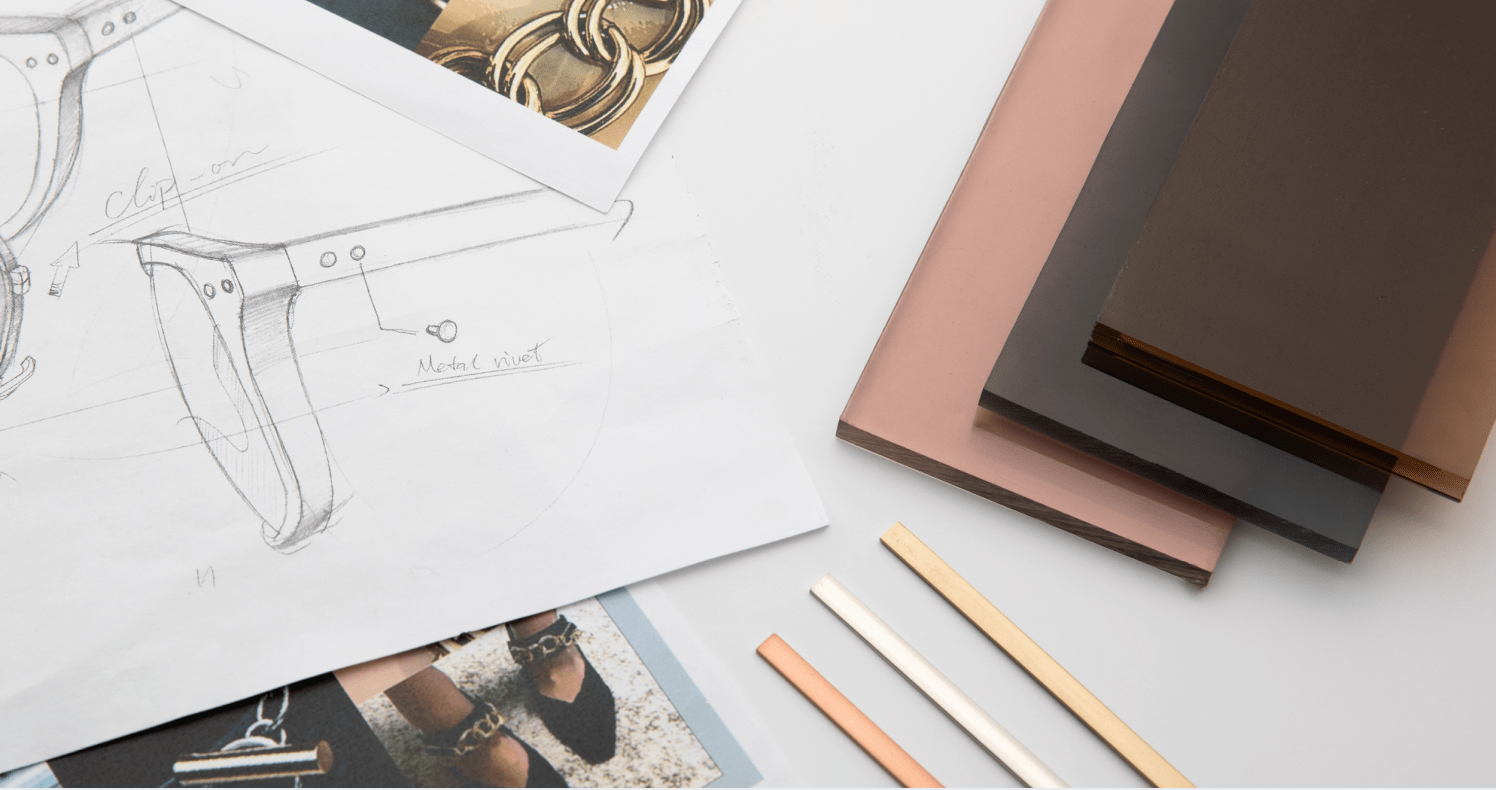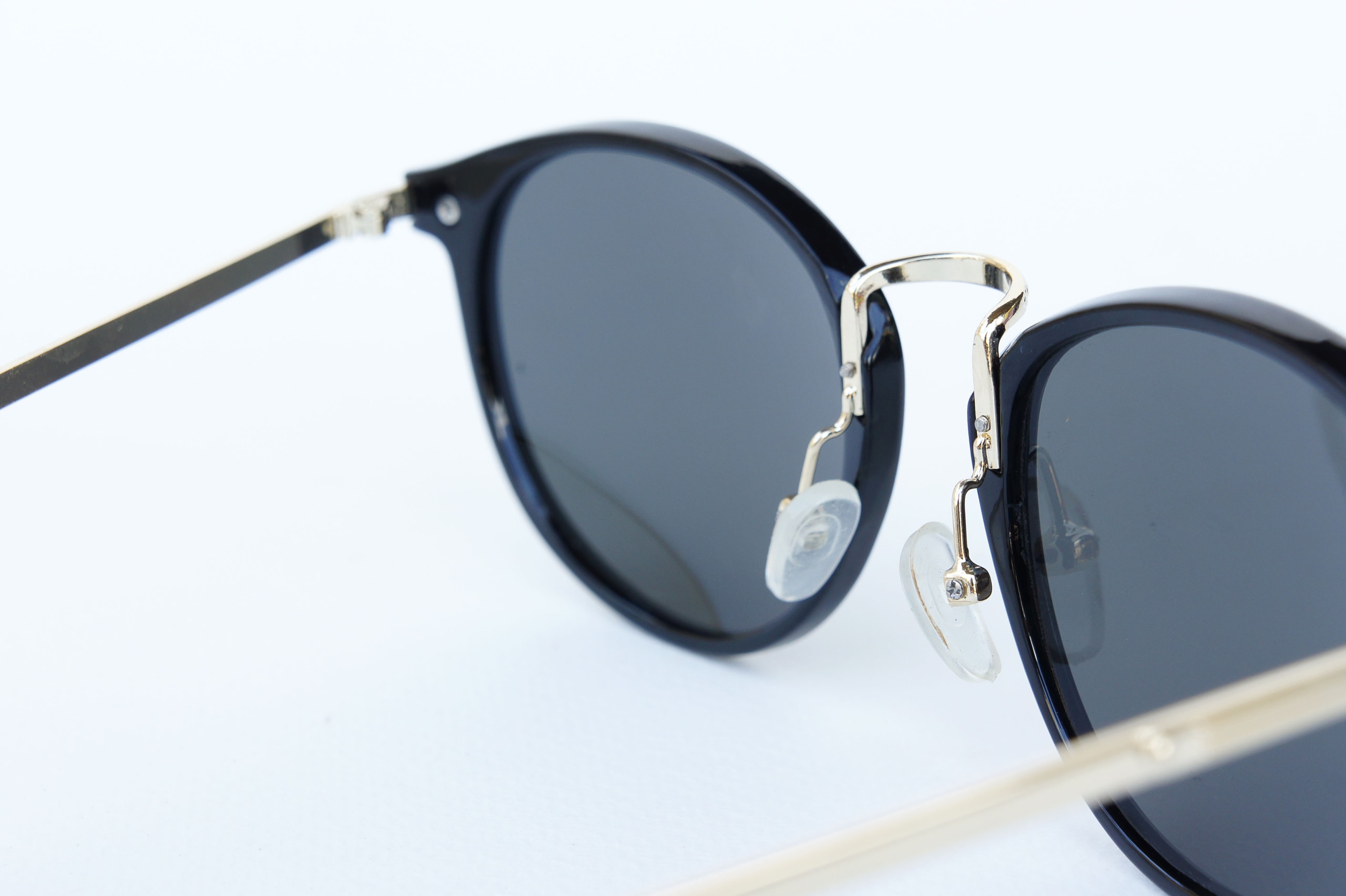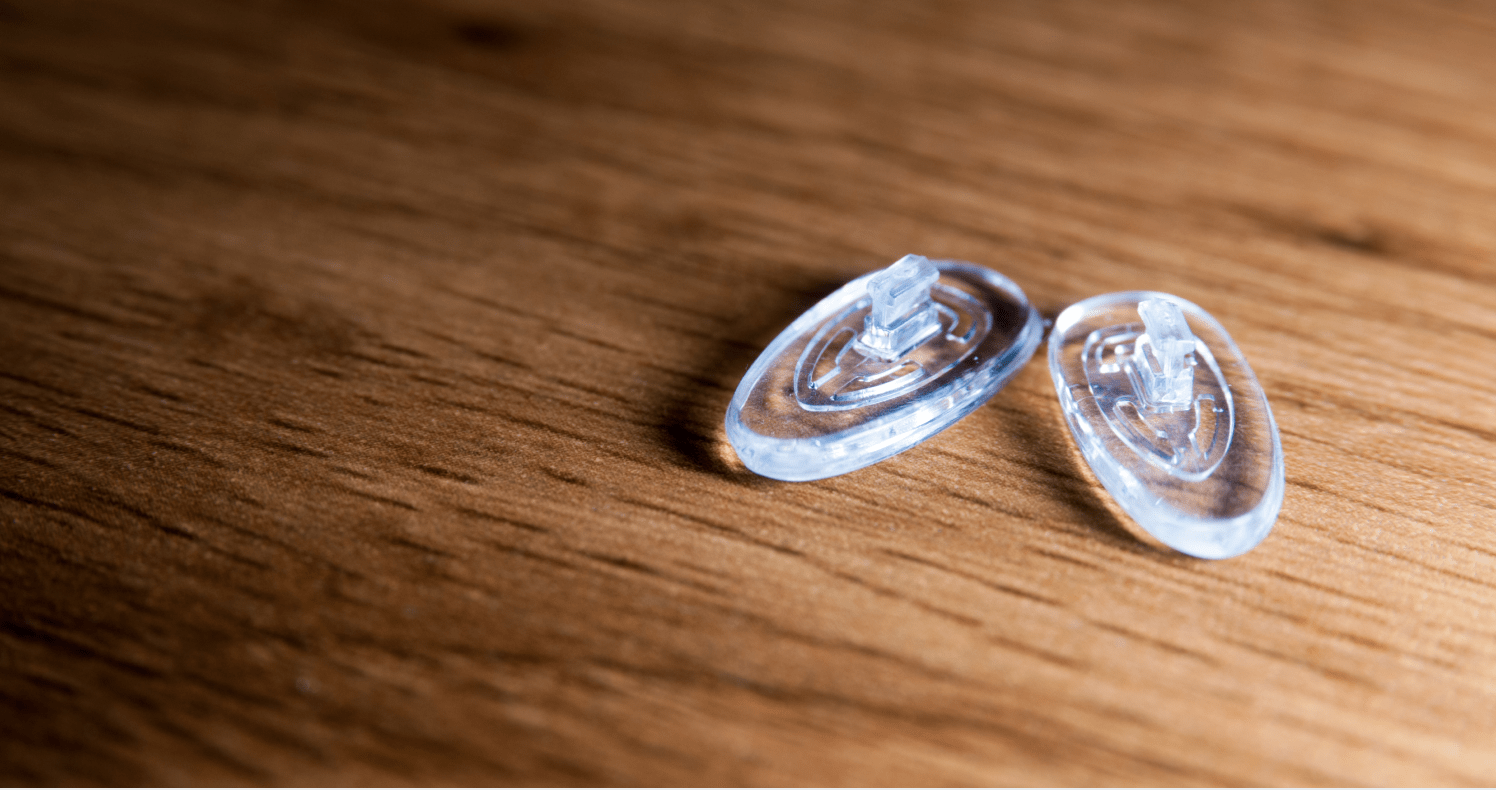History of nose pads for glasses.
Updated NOV 12, 2023 • 4 min read

When choosing a pair of new glasses, chances are good that you spend a lot of time thinking about the color or shape of the frame or even the materials used. I’m guessing you don’t spend much, if any time on deciding the type of nose pads for glasses. But you really should!
I’ll admit, I started giggling while writing this article, because really, nose pads? Who spends time thinking about them? Well, apparently a lot of people in the eyeglasses industry do. There is an entire website dedicated just to glasses nose pads where they cover everything from symmetric or D-shape nose pads to round button types. And a few years ago, Japanese inventor Shoichi Nakamura filed a patent to create a nose pad made of elastomer and attached with resin.
Jump to content
- Why you need nose pads on your eyeglasses
- A short history of nose pads for glasses
- The different types of nose pads
- Which type of nose pad is best for you?
- Classic frames with nose pads in place
Why you need nose pads on your eyeglasses
Without nose pads, your glasses might sit uncomfortably on your nose or slide down your schvitzy T-zone. With the wrong glasses nose pads, your oversize sunglasses might end up digging uncomfortably into your nose leaving painful red marks. But believe it or not, glasses didn’t always have nose pads.

A short history of nose pads for glasses
According to the Zeiss website, from the 1700s until about 1850, eyeglasses had the same basic design. That was something called “temple glasses” which meant that instead of just basic lenses or monocles, glasses had temples to keep your glasses on your ears and a nose bridge to keep them from sliding down your face. But as things moved along, people wanted more comfortable nose pads for glasses.
In 1893 a Frenchman named Jules Cottet designed and patented a type of eyeglasses frame that effectively connected two lenses by a nose bridge in the middle. If you look at old photographs of Cottet, you’ll see him modeling what became known as the “pince-nez” from the French words to pinch and nose. Which really makes it clear why you need a cushion on your nose, because all that pinching can become painful after a while. Besides, pince-nez glasses fell out of fashion pretty quickly and became associated with older people. And as glasses were made in different materials and styles, the need for comfortable nose pads became clear.

The different types of nose pads
All nose pads are not created equal. In fact, in going through an inventory of glasses, we noticed that the main types are silicone or pvc which are generally soft and clear, though you can often choose them in tints that match your glasses or skin tone. Acetate nose pads are almost built-in to the frame, so the look is seamless and blends with your frame. There are even stick on or adhesive nose pads to add an extra layer of cushioning.
Which type of nose pad is best for you?
Bustle had a really interesting article about the 3 best nose pads for glasses. In the article they mentioned the fact that while silicone nose pads are probably the most comfortable and keep your glasses in place the best, they can also trap facial oil underneath. So before you choose your glasses, you should probably spend a bit more time investigating the nose pad. Is it well cushioned? Does it match the eyeglasses or your skin tone? Does it seem flimsy or does it seem tight?
We chose a few frames with either very visible nose pads or those that seem to be just another part of the frame.
Classic frames with nose pads in place
Elliot: These frames have a classic retro look with a black 1950s inspired browline and metal detailing. They also have old-school nose pads to keep you comfortable while wearing them.
Weston frames have a studious look and come in lots of colors. The nose pads are part of the frame, so you don’t really see them unless you’re specifically looking for them.
In larger oversized sunglasses, nose pads aren’t always immediately visible. The nose pads on these Ray-Ban Jackie Ohh II frames seem almost the same size as the rest of the frame. The molding and design is subtle, but designed for maximum comfort.
Published October 27, 2022|Updated November 12, 2023



